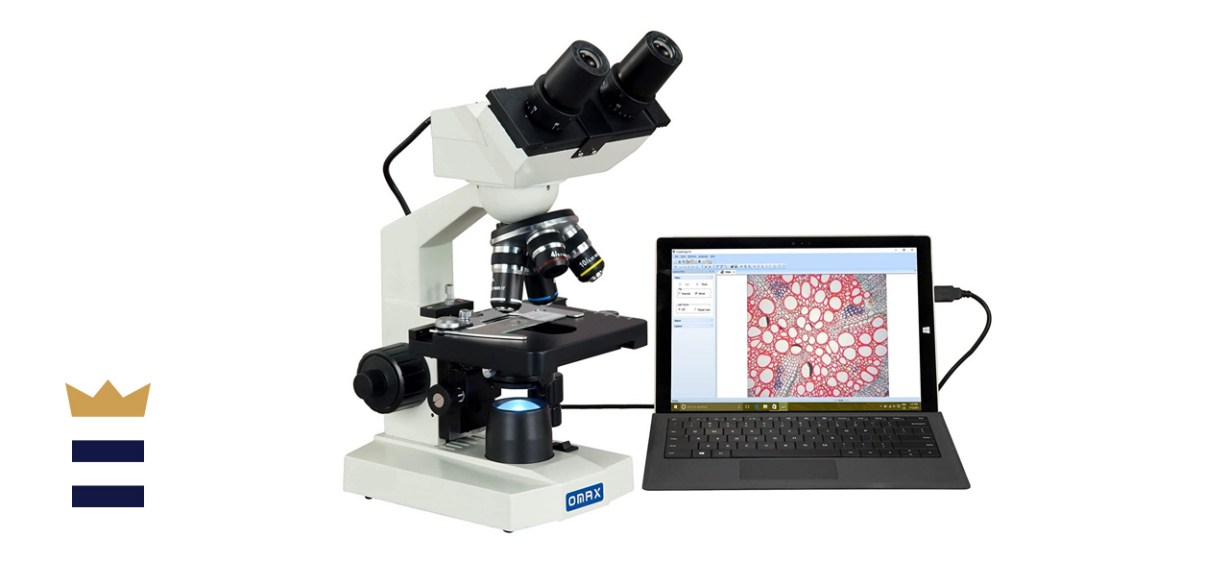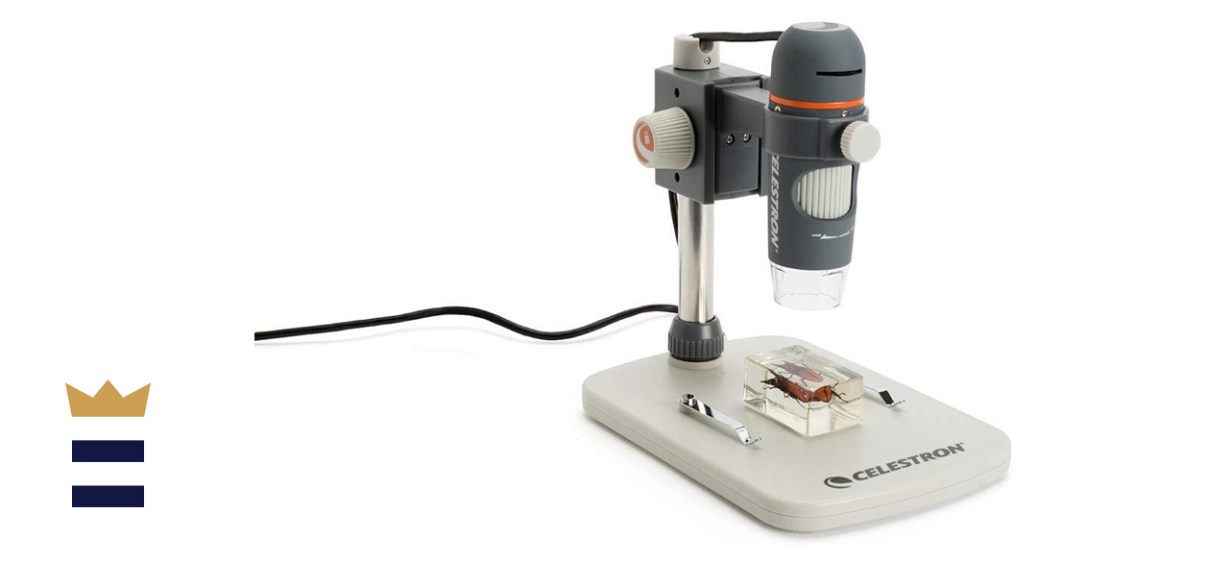Which USB microscopes are best?
The world is an awfully big place. For example, according to the National Science Foundation, the globe is 71% ocean, yet only 5% of that has been discovered or charted. There are so many things to be explored. But for all the massiveness, there are millions of things that are incomprehensibly small. Bacteria, parasites, and microscopic organisms are so small that you need a powerful device to see them. So, if you are a budding scientist or interested in the tiniest of things, get yourself the OMAX Digital Compound Microscope.
What to know before you buy a USB microscope
Magnification levels and camera detail
The magnification power of the microscope will determine how much you can zoom in on something. This will play a role in the amount of detail that you can see and the number of certain organisms that will be visible. If you don’t have the right power, some things will still be invisible. The camera detail is important to consider when you want to take photos or video footage of your findings. A powerful camera can capture details with stunning clarity.
Software compatibility
A digital microscope connects to a computer through a USB cable. There are different kinds of functionality, depending on the model. Some will allow you to view the specimen on your display, while others only show you the photos. Consider what you want to view, and then check if it is compatible with your computer. Some devices work perfectly well on Windows-based and Mac machines but can’t operate on Chromebooks.
Lighting options for clarity
Having the right magnification is crucial, but so too is the lighting. With organisms so small, it can often be difficult to see them with natural light. To be able to view a large range of specimens, look for a digital microscope that has adjustable lighting options built in. These are usually available in halogen, tungsten, LED, or fluorescent bulbs.
What to look for in a quality USB microscope
A magnification of 250-1,000 times
A microscope is only as good as the level of detail that you can see. The higher the magnification, the more organisms will be shown to you. A good quality digital microscope will have a magnification of at least 250 times. That should be good enough to see most things, but going at least as high as 1,000 times will be best.
A good camera for photos
Many digital microscopes are equipped with a camera so that you can view the slides on your computer or television. If you want to take pictures of the little creatures, you’re going to need a camera that can capture them. That is why you should look for a microscope that has at least 1 megapixel for the camera. High-powered microscopes can go all the way to 10.3-megapixels for huge amounts of photographic power.
Fine-tuning the focus on both sides
Clarity is an important part of looking at the smallest of things, which is why you’ll need a microscope that has adjustable eyepieces. Especially for people who wear glasses, it is great when you can adjust both sides independently. That way, you can make sure that the focus is always correct.
How much you can expect to spend on a USB microscope
The average price of a USB microscope will depend on the capabilities and the manufacturer. Affordable devices can retail for less than $50, which is perfect for beginners. More complex devices retail for between $200-$350.
USB microscope FAQ
What’s the difference between a stereomicroscope and a compound microscope?
A. A digital compound microscope is best for viewing negative stained bacteria slides or blood — any sample that has some degree of transparency. A stereomicroscope, on the other hand, is great for looking at solid objects up close, like skin, hair, or plant materials.
Can you buy accessories for a USB microscope?
A. Yes, there are several accessories available for digital microscopes. These range from different lighting bulbs, additional magnification, larger slides, and software.
What’s the best USB microscope to buy?
Top USB microscope
OMAX MD82ES10 40X-2000X Digital Compound Microscope
What you need to know: This feature-packed USB microscope is packed full with everything you’ll need.
What you’ll love: Powerful enough to see the smallest of details, this digital microscope has a magnification ranging from 40-2,000 times. The eyepieces are at 45 degrees and the binocular head can swivel 360 degrees.
What you should consider: The microscope is only compatible with Mac computers through the Photo Booth app, so if you have a computer with any other operating system, this microscope won’t work for you.
Where to buy: Sold by Amazon
Top USB microscope for the money
Cainda Digital Microscope with Metal Stand
What you need to know: This microscope is a great alternative for inquisitive scientists.
What you’ll love: Connecting directly to your mobile device or monitor, this small USB microscope has a magnification range of 40-1,000-times. It comes with a metal stand but can also be removed to operate manually. It is best used to look at things on the surface, like skin, insects, or hair. It has eight dimmable lights for better illumination.
What you should consider: Due to the USB connection cable, this microscope doesn’t work on iPhone or iOS devices.
Where to buy: Sold by Amazon
Worth checking out
Celestron Digital Microscope Pro
What you need to know: Celestron is known for its optical devices, especially telescopes, and this digital microscope features the same high-quality components.
What you’ll love: This camera is great for capturing high-resolution footage, as it can zoom between 20-200-times. It comes with a 4-foot USB cable that can easily be connected to a compatible device.
What you should consider: Some users reported that this product was hard to use with Mac computers.
Where to buy: Sold by Amazon
Sign up here to receive the BestReviews weekly newsletter for useful advice on new products and noteworthy deals.
Charlie Fripp writes for BestReviews. BestReviews has helped millions of consumers simplify their purchasing decisions, saving them time and money.








